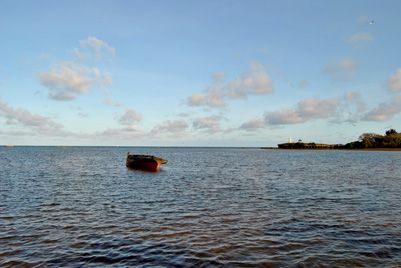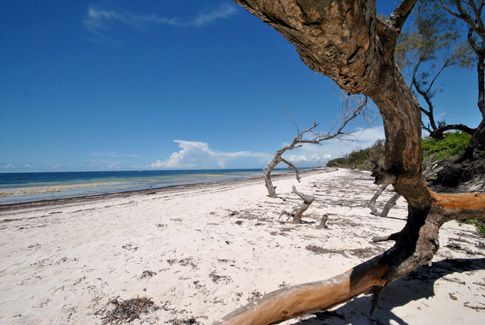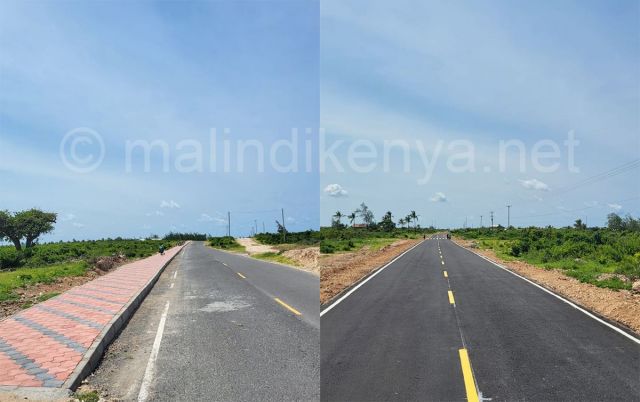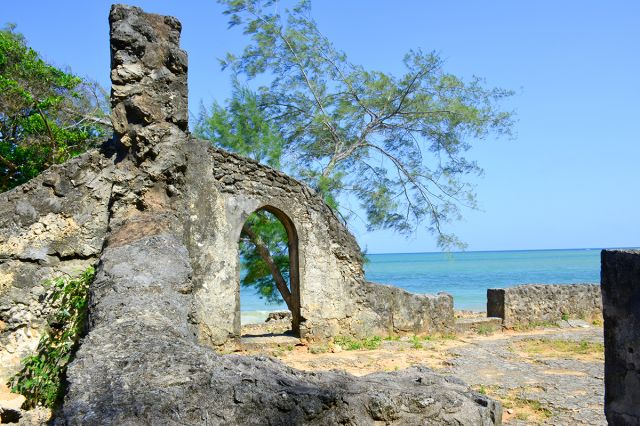
PLACES
16-11-2020 di redazione

The Portuguese presence in Malindi began with the arrival of Vasco de Gama in 1498. It is known that the chapel was built at the end of the 15th century. It is rather surprising that the authorities of an ancient Islamic city authorised the construction of a Christian church.
At that time the Portuguese travelling by sea were establishing trade bases far and wide on the East African coast. They were generally considered not to be welcome intruders because of their rapacity and harsh behaviour. However, it seemed convenient to the Sultan of Malindi and the Portuguese to ally themselves with the Sultan of Mombasa and others.
Friendly relations were established which lasted throughout the 16th century. Thus permission was granted to create a factory including warehouses, houses, offices and even a chapel.
The "enclave" lasted until the garrison retreated to Mombasa in 1593; after that date the relations remained cordial for about a century. At that time the "enclave" must have hosted about sixty Christians. For such a community the chapel and cemetery seem to be modest in size, but this was probably the decision. When the chapel was built, Islamic worship had reached a level of utmost importance: 17 mosques, a sign of the greatness of this beautiful city.
In 1542 the famous missionary St. Francis Xavier, on his way to Goa, a Portuguese possession located on the west coast of the Indian peninsula, landed in Malindi to bury a sailor. In Rome Francis Xavier had founded the company of Jesus in 1534. Hence the interest and generosity of the company for the restoration of the chapel. The dedication to St. Francis has always been associated with the chapel. At the same time an important Muslim citizen told St. Francis that Islamic worship had waned and that only three mosques were still in use.
After the departure of the Portuguese, in 1593, the history of the chapel became obscure. During the 17th and 18th centuries the importance of Malindi declined and almost disappeared. During this period it was described as ruined and abandoned. There are doubts that the chapel itself may have been reduced to ruin in various periods.
For about 300 years no historical information about it has been found.
The cemetery was used again when the first British District Commissioner of Malindi, J. Bell Smith, was buried there in 1894 and since then British governors and settlers have used it for a Christian burial. Other gravestones of the dead can be seen in the cemetery today, one of which bears the name of Charles Arnold Frank Mathews, the son of Canon Mathews, a pioneer of tea growing in Kenya, who went to Malindi on holiday in 1868 and drowned while swimming in the Indian Ocean.
Today the sepulchres of that time can still be seen, in the shade of tropical plants and the old church has been restored and only the memory and the place remains of the original one.
HISTORY
di redazione

Many who know Kenya's history are convinced that Christianity was brought here by German missionaries who opened the first Catholic mission in...
HISTORY
di redazione

The story of the first Chinese to land on the shores of the Indian Ocean is six hundred years old.
According to Beijing scholars who recently published a book on the voyages of the great oriental navigators, it was in...
AFRICAN POEM
di Freddie del Curatolo

Watamu the beautiful.
Malindi the magic.
Watamu the young and sparkling.
Ancient Malindi but still interesting.
PLACES
di redazione

Bad news does not always bring as much bad news, sometimes it rains in the dry and not in the wet...
KENYA COAST
di redazione

Mombasa is certainly the oldest city in Kenya and one of the historical ports of East Africa. The other landings mentioned as early as the tenth century AD by early navigators, are now ruins of cities (such as Kilwa in...

Malindi is a small town overlooking the Indian Ocean shores, located about 120 km from Mombasa and just a few miles from the mouth of river Sabaki which takes the name Galana in its upper flow and is, actually, after...
PROMOTION
di redazione

As part of the presentation of the "Kenya Beach Destination Strategy," the report on the revitalization of tourism commissioned by the Kenyan government agency Spanish THR, yesterday in Malindi there was also talk of Watamu destination.
"A tourist destination that...
NEWS
di redazione

The low season in Kenya sometimes holds some nice surprises, especially when new administrations (such as the one in national government and the one sitting in Kilifi's county offices) decide to...
PLACES
di redazione

It was called "Jumba La Mtwana", where "jumba" in kiswahili means "home".
It was an Arabic citadel built in the 13th century AD on the banks of the Indian Ocean, not far from the cove of today's Mtwapa, about twenty...

I didn't want to go back to Kenya.
Not that I didn't like it, I liked it more!
I had enjoyed myself in profusion.